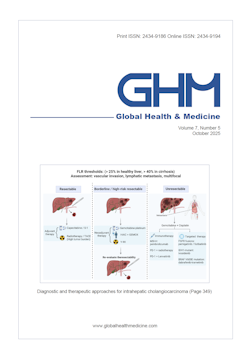Global Health & Medicine 2024;6(2):117-123.
Prevalence of transmitted drug resistance and phylogenetic analysis of HIV-1 among antiretroviral therapy-naïve patients in Northern Vietnam from 2019 to 2022
Tran GV, Hayashida T, Dang ALD, Nagai M, Matsumoto S, Tran LK, Le HNM, Van TD, Tanuma J, Pham TN, Oka S
Since the rapid expansion of antiretroviral therapy (ART) for HIV, transmitted drug resistance (TDR) has become a major concern in Vietnam. HIV services there are transitioning to be covered by social insurance. Access to pre-exposure prophylaxis (PrEP) is being expanded to tackle the growing HIV epidemic among men who have sex with men. Therefore, a cross-sectional study was conducted at 10 ART facilities in Northern Vietnam from 9th December 2019 to 9th June 2022 to investigate the prevalence and pattern of TDR among ART-naïve people living with HIV (PLWH). TDR mutations were defined according to the World Health Organization 2009 List of Mutations for Surveillance of Transmitted Drug Resistant HIV Strains. Mutation transmission dynamics and TDR clusters were investigated via phylogenetic analysis. We enrolled 391 ART-naïve PLWH. The overall TDR prevalence was 4.6%, with an annual prevalence of 6.0% in 2019/2020, 4.8% in 2021, and 1.3% in 2022. TDR mutations to non-nucleoside reverse transcriptase inhibitors (2.8%), including K103N were the most common. Less commonly, the protease inhibitor-associated mutation M46I and mutations to nucleoside reverse transcriptase inhibitors, including M184V/ I, were observed. CRF01_AE was the most common subtype (77.0%). CRF07_BC (14.3%), which had been rare in Vietnam, was also observed. No genetic association was observed between HIV-1 sequences with TDR mutations. In conclusion, the overall prevalence of TDR was stably low in this region. The phylogenetic tree suggests that TDR clusters have not formed. Continuous monitoring of HIV TDR and strains is crucial to maintaining ART and PrEP efficacy.
DOI: 10.35772/ghm.2023.01112







